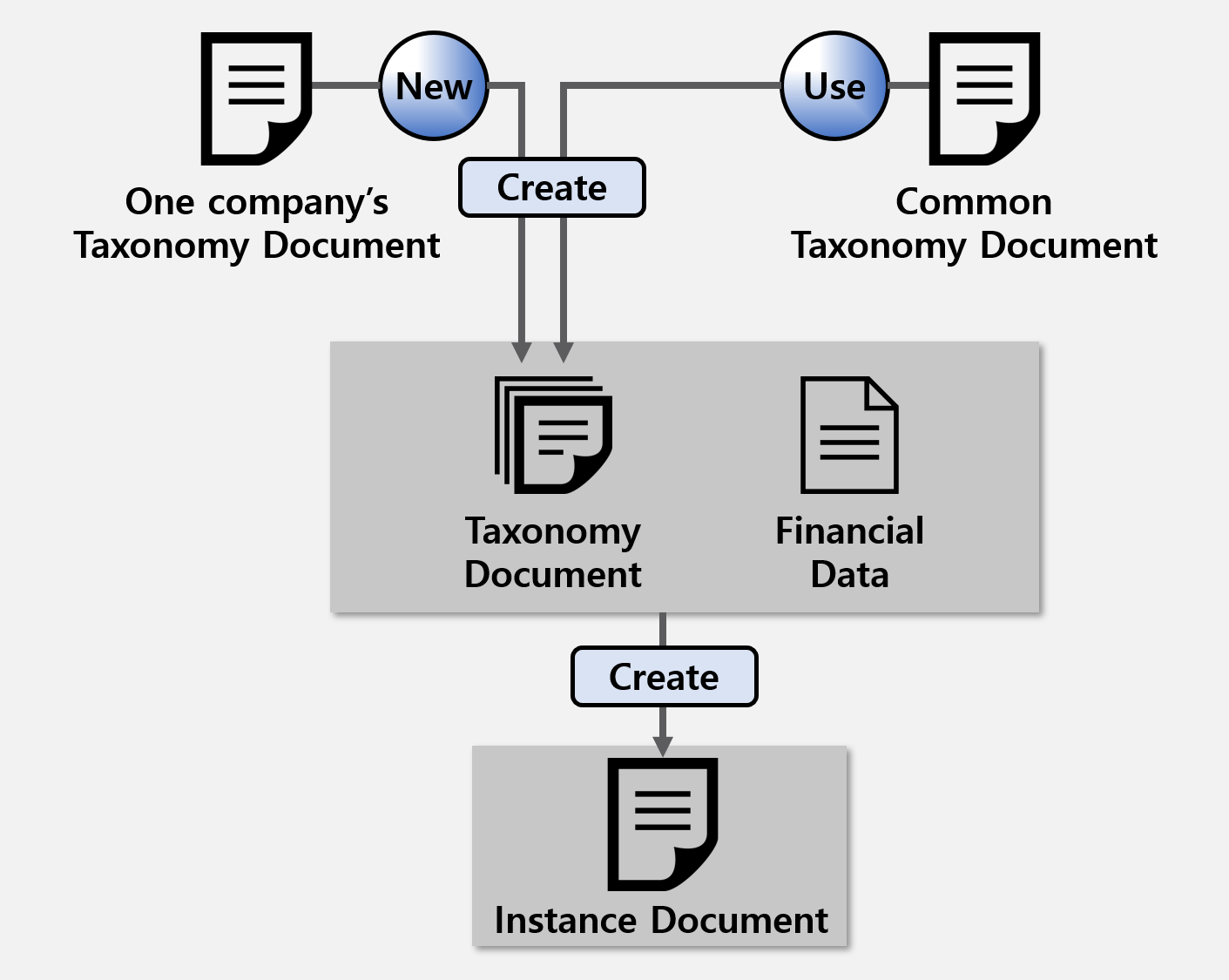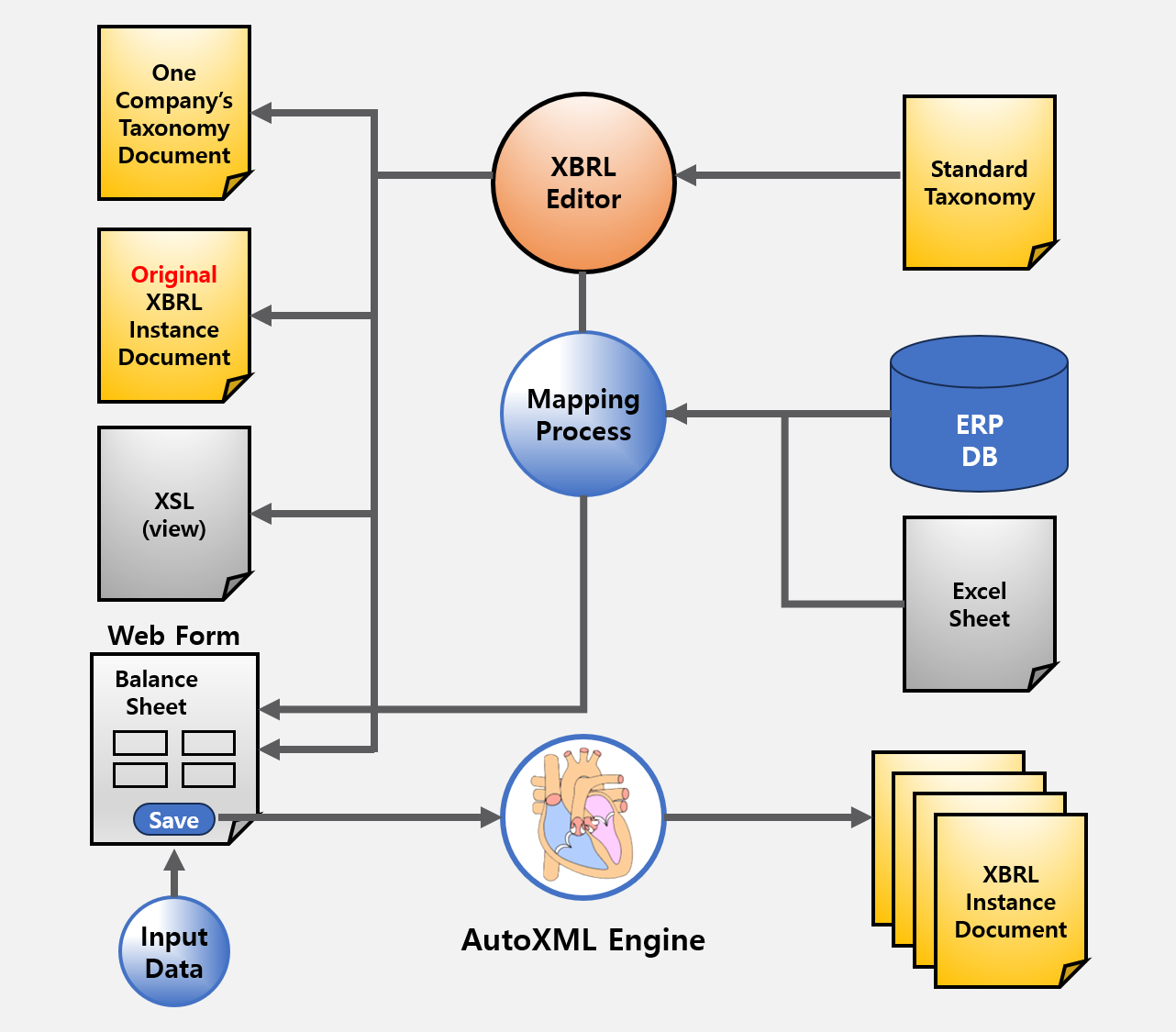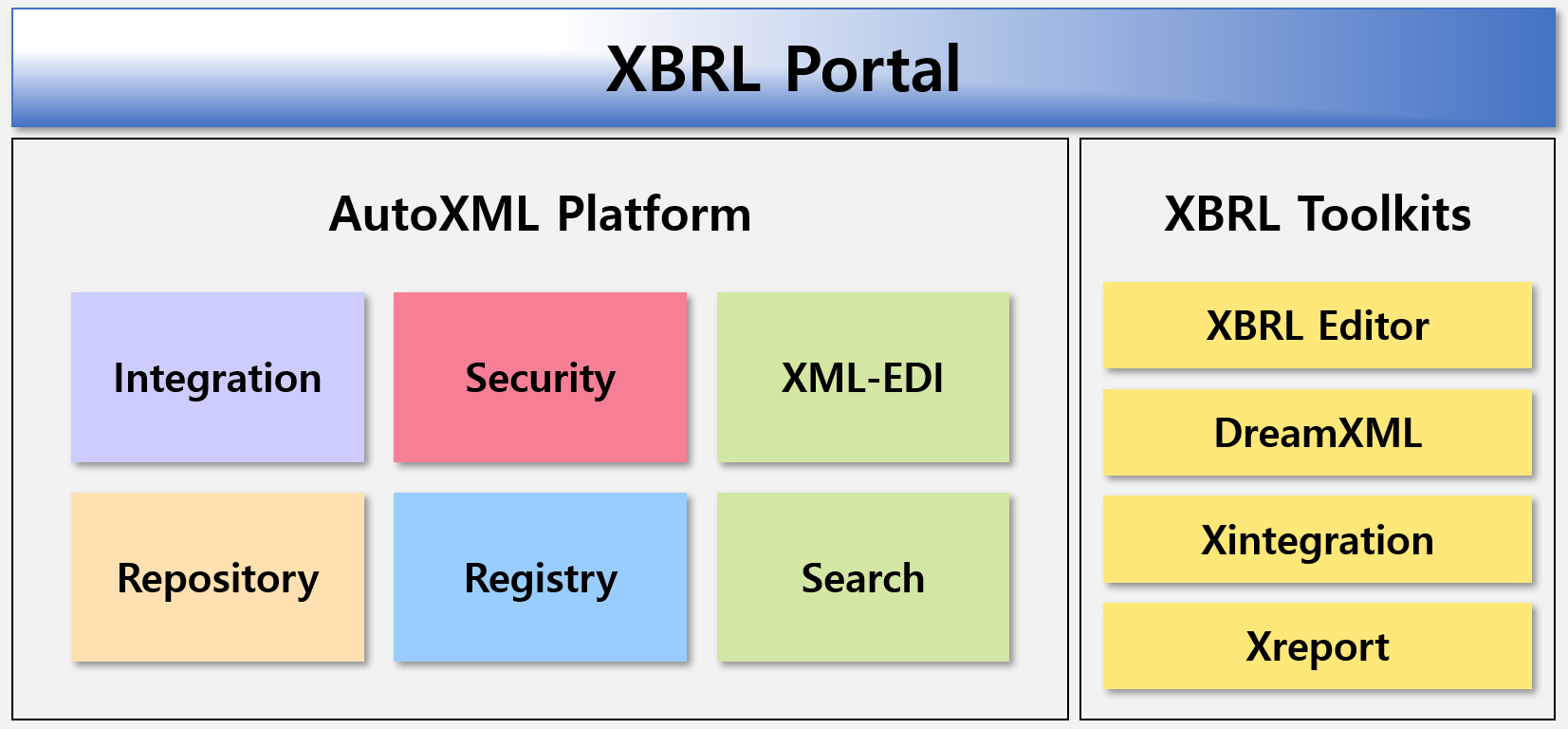XBRL
XBRL is a XML based language developed by Charles Hoffman in 1999, who is a CPA in Washington, for the electronic communication business and financial data which revolutionized business reporting around the world.
XBRL (eXtensible Business Reporting Language) is a language to express financial data (financial statements, internal financial report, etc.) in the enterprises or organization, and is a XML based language that can describe various information like financial, management, investment.
The financial information is different in document structure, items and calculation method by years, organization and industry. It is difficult to reuse and share the information since it costs a lot in existing way of making. XBRL technology can complement these weaknesses by adoption of standard XML technology in creation, distribution, analysis and conversion of standard financial data and provide transparency, creditability and efficiency for enterprise, government, investor and financial association.
Besides, the latest XML related technology positively accepted in the XBRL 2.1 specification like XML Schema, XSL, and XLink.
XBRL (eXtensible Business Reporting Language) is a language to express financial data (financial statements, internal financial report, etc.) in the enterprises or organization, and is a XML based language that can describe various information like financial, management, investment.
The financial information is different in document structure, items and calculation method by years, organization and industry. It is difficult to reuse and share the information since it costs a lot in existing way of making. XBRL technology can complement these weaknesses by adoption of standard XML technology in creation, distribution, analysis and conversion of standard financial data and provide transparency, creditability and efficiency for enterprise, government, investor and financial association.
Besides, the latest XML related technology positively accepted in the XBRL 2.1 specification like XML Schema, XSL, and XLink.
XBRL Standard Process
Taxonomy Document
Taxonomy Document is consist of XML Schema and Link Base (XLink), and define the method of structure, content, and work process of Instance Document.
1. XML Schema
XML Schema define the Instance Vocabulary (Element Name, Attributes, etc.) and describe detailed name of account. The financial statement is being established by Taxonomy from each country's XBRL organization in which conforms by each country's accounting standards. The industry Taxonomy and in-house Taxonomy can be defined.
2. LinkBase(XLink)
Define document structure, display order and process order. This is different file from XML Schema. Link Base uses XLink technology and can define following definition.
- Presentation Link:Define display order for each element
- Calculation Link:Define formula of numeric value for each element
- Definition Link:Define parent-child relationship for each element
- Label Link:Define display label for each element
- Reference Link:Define reference information

AutoXML based XBRL Process
The way of AutoXML based XBRL process is to create XBRL Instance document on the web (XML on HTTP), in addition to existing XBRL creation process by using the information of financial data in ERP system and excel data by general users.
The general users can see XBRL Instance document on the web browser by using XSL view without web programming from the data in the financial database or exclusive XBRL editor.
The general users can see XBRL Instance document on the web browser by using XSL view without web programming from the data in the financial database or exclusive XBRL editor.

The Features of AutoXML based XBRL Solution
- The general users can create XBRL financial statements from the financial database every year without extra programming or typing data.
- The general users can create XBRL Instance document.
- Can see XBRL Instance document on the web browser.
- Create new XBRL Instance document by in-house Taxonomy, XBRL Instance, XSL, and XBRL Web-Form.
The Difference from Existing Method
| Classification | Existing Method | AutoXML Method |
|---|---|---|
| Creation | Tool + Schema | Webform + XML Creation Engine / Tool |
| XSL View | No | Yes |
| Valication | Possible | Possible |
| User Application | Taxonomy Tool | Web Browser |
| Exchange Process | Require additional development | XML - EDI |
| Creation Process | Complicated | Simple |
XBRL System Configuration

The Financial Statement using XML eBook
Create 5 types of financial statement as eBook style report like below.
- The Basic Information
- Balance Sheet
- Income Statement
- Statement of Changes in Equity
- Cash Flow Statement
The Integration with XBRL Portal System
AutoXML based XBRL portal system enable users to create XBRL Instance document from the existing financial information system like ERP system and/or accounting system. The XBRL Instance document can be exchanged in the web based XML EDI (Electronic Document Interchange) system among governments, investors, enterprises and accounting firms.


